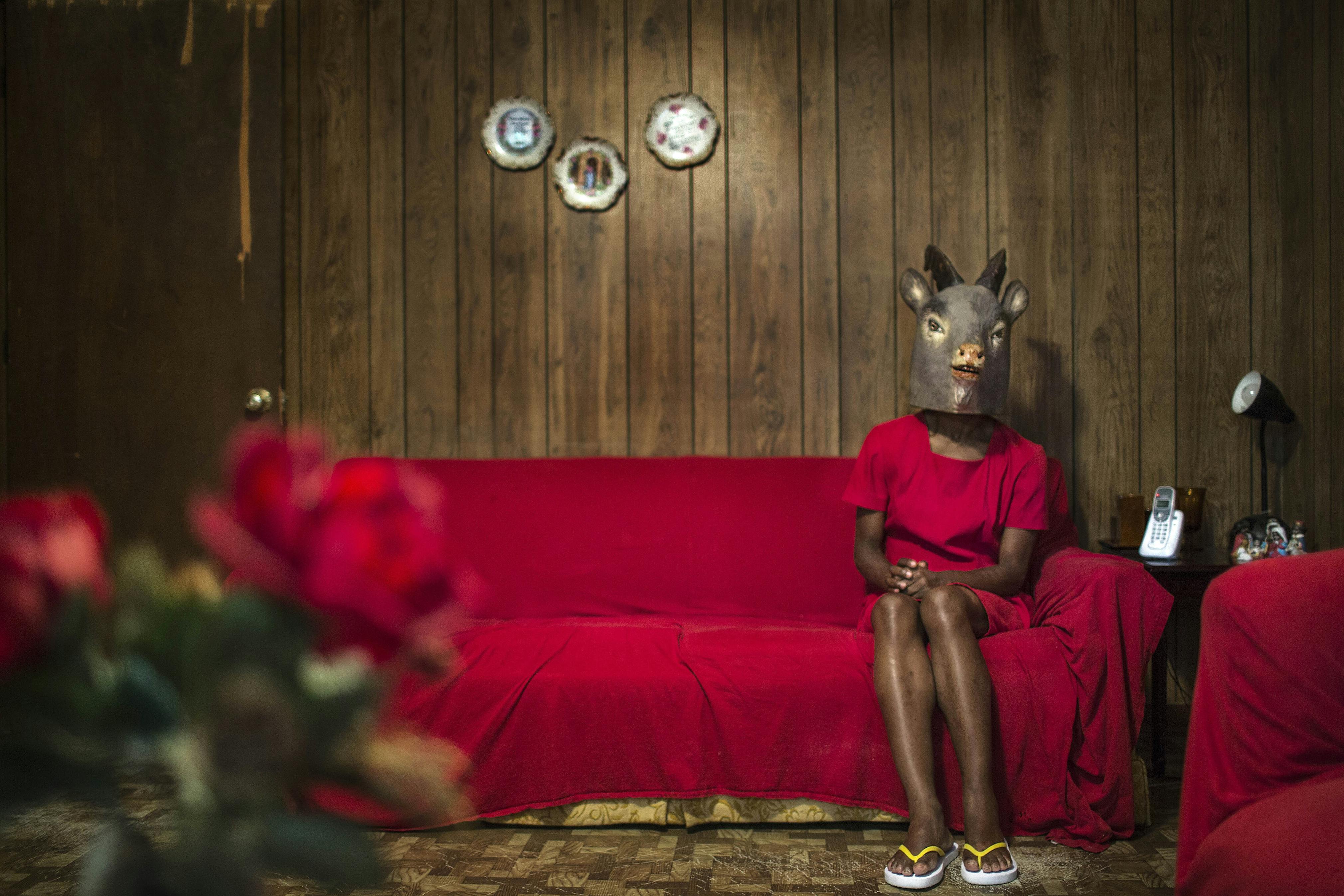Minnie Evans
(1892–1987)Minnie Evans made paintings using wax crayons, employed a wide array of colors in each of her works, and eventually explored oil paints and mixed media collage. She drew on any materials she could find, such as window shades, book bindings, and stationery.
Biography
Raised primarily by her grandmother, Minnie Evans grew up with an acute awareness of the strong women in her family, including her ancestors, whom her family traced back to an enslaved woman in Trinidad.
From an early age, she experienced visions featuring prophets, religious figures, animals, and natural forms. She attended school in Wilmington, North Carolina, until sixth grade, at which point she left to help earn money for her family. At age sixteen, she married Julius Caesar Jones, who worked as a valet for a nearby wealthy landowner, Pembroke Jones; Evans began to work as a domestic on the Jones estate. Evans did not begin drawing until Good Friday 1935, when she made two small pen-and-ink works on paper after a spiritual experience in which God commanded her to draw. Another five years passed before she rediscovered these works by chance and took their reappearance as a sign to draw more fervently.
Evans made paintings using wax crayons, employed a wide array of colors in each of her works, and eventually explored oil paints and mixed media collage. She drew on any materials she could find, such as window shades, book bindings, and stationery. After Jones passed away, Evans continued to work on his estate for his widow, and eventually became the gatekeeper for the gardens when they were opened to the public in 1949. She often hung her drawings up near the gatehouse, displaying and selling them to visitors. Much of her work is inspired by the colors and natural forms she observed in the gardens, as well as the ongoing influence of her religion and sacred visions.
Evans passed away in 1987. Her work is in the collections of institutions such as the Whitney Museum of American Art; the Art Institute of Chicago; and the American Folk Art Museum. The Studio Museum has presented her work in exhibitions including To Conserve a Legacy: African American Art from Historically Black College and Universities (1999), organized in collaboration with the Addison Gallery of American Art, and When the Stars Begin to Fall: Imagination and the American South (2014).
Exhibitions and Events
Minnie Evans
(1892–1987)Minnie Evans made paintings using wax crayons, employed a wide array of colors in each of her works, and eventually explored oil paints and mixed media collage. She drew on any materials she could find, such as window shades, book bindings, and stationery.
Untitled, 1944
Biography
Raised primarily by her grandmother, Minnie Evans grew up with an acute awareness of the strong women in her family, including her ancestors, whom her family traced back to an enslaved woman in Trinidad.
From an early age, she experienced visions featuring prophets, religious figures, animals, and natural forms. She attended school in Wilmington, North Carolina, until sixth grade, at which point she left to help earn money for her family. At age sixteen, she married Julius Caesar Jones, who worked as a valet for a nearby wealthy landowner, Pembroke Jones; Evans began to work as a domestic on the Jones estate. Evans did not begin drawing until Good Friday 1935, when she made two small pen-and-ink works on paper after a spiritual experience in which God commanded her to draw. Another five years passed before she rediscovered these works by chance and took their reappearance as a sign to draw more fervently.
Evans made paintings using wax crayons, employed a wide array of colors in each of her works, and eventually explored oil paints and mixed media collage. She drew on any materials she could find, such as window shades, book bindings, and stationery. After Jones passed away, Evans continued to work on his estate for his widow, and eventually became the gatekeeper for the gardens when they were opened to the public in 1949. She often hung her drawings up near the gatehouse, displaying and selling them to visitors. Much of her work is inspired by the colors and natural forms she observed in the gardens, as well as the ongoing influence of her religion and sacred visions.
Evans passed away in 1987. Her work is in the collections of institutions such as the Whitney Museum of American Art; the Art Institute of Chicago; and the American Folk Art Museum. The Studio Museum has presented her work in exhibitions including To Conserve a Legacy: African American Art from Historically Black College and Universities (1999), organized in collaboration with the Addison Gallery of American Art, and When the Stars Begin to Fall: Imagination and the American South (2014).

